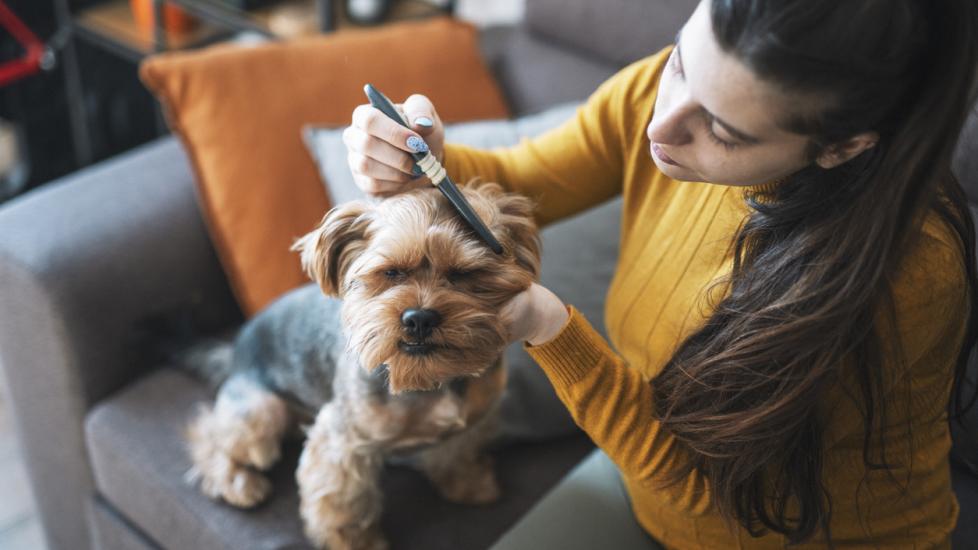Flea dirt, also known as flea feces or flea detritus, is a telltale sign of an infestation with the common house flea (Ctenocephalides canis and C. felis). These minuscule black particles are actually dried blood that has passed through the digestive system of adult fleas. When you see flea dirt on your pet’s fur, in bedding, or around areas where they spend time, it indicates that there are active fleas present, not just eggs or larvae.
How to Identify Flea Dirt:
1. Appearance: Flea dirt looks like tiny grains of pepper or coffee grounds. It’s important to distinguish this from other types of debris or dandruff because its presence suggests immediate action needs to be taken.
2. Location: Check your pet’s skin folds, under their collar, around the base of the tail, and in dense fur areas such as behind the ears. You may also find flea dirt in carpets, upholstery, pet beds, and even human clothing if there is heavy infestation.
3. Testing for Presence: To confirm whether what you have found is indeed flea dirt, use a white cloth or paper towel to rub against the affected area. If the material turns red when wetted with water or alcohol, then it’s likely flea dirt due to the release of digested blood.
The Importance of Recognizing Flea Dirt:
1. Early Detection: Spotting flea dirt allows you to catch an infestation early before it becomes widespread. This gives you a better chance at eradicating the problem quickly and effectively.
2. Treatment Planning: Once identified, you can create a targeted treatment plan that includes regular grooming with a fine-tooth comb, vacuuming frequently, treating pets with appropriate medications, and potentially using chemical treatments on floors and furniture.
3. Prevention of Anemia and Allergies: Untreated flea infestations can lead to severe conditions such as anemia in animals and allergic reactions in both pets and humans. By recognizing flea dirt promptly, these issues can be avoided.
Prevention Tips:
1. Regularly check your pets for signs of fleas and treat them accordingly.
2. Use preventative products prescribed by a veterinarian to keep fleas at bay.
3. Vacuum regularly, especially in high-traffic areas frequented by pets.
4. Keep your home clean and tidy since fleas thrive in cluttered environments.
5. Limit your pet’s exposure to stray animals or those without proper flea control measures.
6. Consider using diatomaceous earth or boric acid powder in hard-to-reach places where fleas might hide.
7. Provide frequent baths or rinses with flea shampoos for your pets, particularly during warmer months when flea populations tend to increase.
Conclusion:
Flea dirt is more than just dirt; it’s a signal that fleas have made themselves comfortable in your environment. Understanding how to identify and respond to flea dirt is crucial in maintaining a healthy home and keeping both pets and family members safe from potential health risks associated with flea infestations. Remember, prevention is key!
